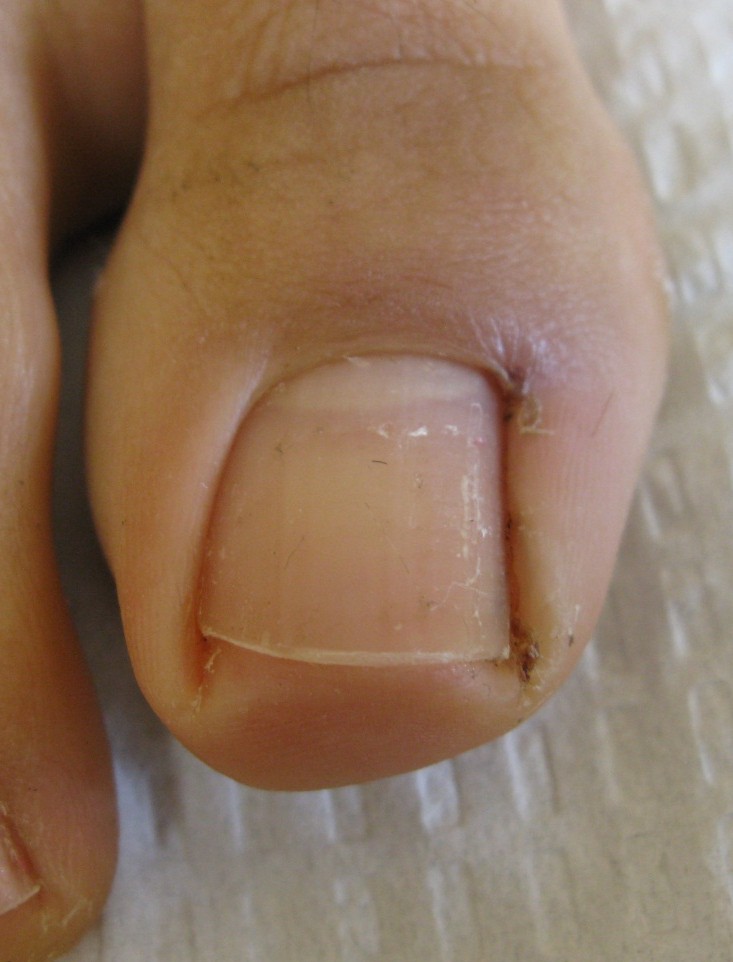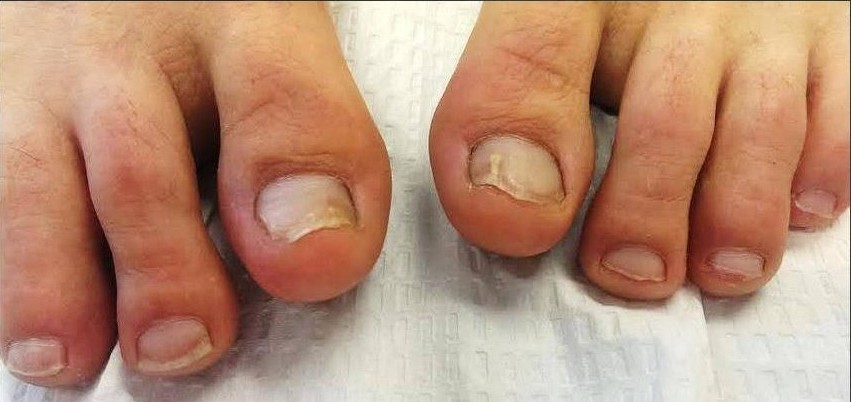Gout Update 2012
By: Michael Zapf, DPM
January 8, 2012 – Special to the Acorn
It has been a relatively warm winter yet our office has already gotten over 20 calls from patients with the same complaint: a sudden onset of redness, swelling, heat and, often, unbearable pain, originating from the foot without any history of injury or change in routine. After the diagnostic workup I will describe below, these patients, like some 6-8 million fellow Americans (mostly male) ended up having gout. In the past, gout was almost always in the big toe joint. Most patients still seem to picture in their mind a painting of Old’ King Henry, some number or other, with a chunk of meat in one hand with a flagon of wine in the other, resting his foot on a pillow with heat waves rising from the area of the big toe. “But, Doc, I don’t even drink” some of our patients say. Let me try to clear some of this up.
All gout has the sudden onset without precipitating factors in common. But what is surprising is the number of anatomical locations we have seen it this year. Personally, I have seen this season’s gout not only in the big toe, but the second toe, the 5th (baby) toe, the second metatarsophalangeal (toe-foot) joint and the outside, middle and top of the foot and, in one case, the heel. One patient had so much gout in his little toe that it broke the skin causing a wound. Yes, it can get that bad. I have read that the general incidence of gout is on the rise, especially in men.
Gout is caused when a normally dissolved material, uric acid, comes out of solution forming crystals. If you remember your chemistry, this happens when the fluid cools (like salt water evaporating in a glass). If you have more uric acid circulating in your body than you need, the crystals form in the coolest parts, your feet. The higher your uric acid levels (measured with a blood test) and the colder your feet get the more likely you have solid crystals. The seasonal factor is winter where it is just colder. Add surfing and snowboarding and you see why two of my patients developed gout.
Genetics, increased caloric intake, being overweight, having kidney trouble, high alcohol intake and, ahem, maturity, all seem to increase out load of uric acid.
The diagnostic work-up usually involves a careful history and physical examination, x-rays of the painful part and a measurement of the uric acid level with a blood test. The two most likely competing diagnoses are an injury, which usually has a corresponding history with the resulting damage often seen on x-ray, and an infection which is usually accompanied by a break in the skin. Sometimes it is very hard to tell gout from an infection and, in those cases, we often treat for both conditions to be safe. Since cooling the body makes more crystals form, it is wrong to put ice bags on a gout foot, even though it is good for an injury.
The crystals, by themselves, are not vary harmful but the body’s reaction to them causes an immense inflammatory response that hurts like crazy, sometimes requiring patients to use crutches to keep their foot off the ground. This is the stage where anti-inflammatory medication seems to be helpful, either doses of a strong ant-inflammatory pill or a cortisone injection. Other self-help remedies that seem to work include drinking 2-4 liters of fluid daily, avoiding alcohol (especially beer), limiting protein intake, especially fish, meat and poultry to 4—6 ounces per day and, an anecdotal folk remedy, eating 1 ¼ cups of dark, red fresh cherries a day. Cherry juice is a weak alternative.
A quick response to the high dose of anti-inflammatory medication we prescribe is almost diagnostic for gout, much to the relief of the gout victim. I stop my initial care of the patient at this point, sending them back to their primary care doctor for medication to lower uric acid levels. He or she will usually use medications that can lower the production of uric acid, increase our body’s ability to clear it out of your system or slow down your body’s overenthusiastic attack on the crystals. You might have seen one of the newest medications, Urloric, advertised on television. The gout blogs say it is effective, but, expensive at $200 a month if you do not have insurance. These medications are recommended for people with recurrent attacks or who might be developing uric acid kidney stones. Another risk factor is the blood pressure medication hydrochlorothiazide (HCTC). Many combination blood pressure medications, such as Diovan, Lopressor, Monopril, and Ziac and about 30 others, contain HCTZ without patients being aware of it. If you have chronic or recurrent gout and are taking a HCTZ medicine, you will need to talk to your doctor about switching.
There are a lot of uric acid lowering diets on the Internet (look for a low purine diet) and we have a couple in our office as well. All of the diets lower the protein that leads to uric acid by reducing meat, poultry and fish, increasing plant proteins, avoiding simple sugars and alcohols, especially beer. I am not sure how well the diets really work but when the pain is bad enough, most of us will do anything to make it go away. While it may be fun to fantasize you are royalty, this is certainly one aspect you can do without.
List of medications containing HCTZ
- Apresazide® (containing Hydralazine, Hydrochlorothiazide)
- Accuretic® (containing Quinapril, Hydrochlorothiazide)
- Benicar® HCT (containing Olmesartan Medoxomil, Hydrochlorothiazide)
- Diovan® HCT (containing Valsartan, Hydrochlorothiazide)
- Dutoprol® (containing Metoprolol, Hydrochlorothiazide)
- Exforge® HCT (containing Amlodipine, Hydrochlorothiazide, Valsartan)
- Hydrap-ES® (containing Hydralazine, Hydrochlorothiazide, Reserpine)
- Hydro-Reserp® (containing Hydrochlorothiazide, Reserpine)
- Hydropres® (containing Hydrochlorothiazide, Reserpine)
- Hydroserp® (containing Hydrochlorothiazide, Reserpine)
- Hydroserpine® (containing Hydrochlorothiazide, Reserpine)
- Hydra-Zide® (containing Hydralazine, Hydrochlorothiazide)
- Inderide® (containing Hydrochlorothiazide, Propranolol)
- Inderide® LA (containing Hydrochlorothiazide, Propranolol)
- Lopressor® HCT (containing Metoprolol, Hydrochlorothiazide)
- Mallopress® (containing Hydrochlorothiazide, Reserpine)
- Marpres® (containing Hydralazine, Hydrochlorothiazide, Reserpine)
- Monopril® HCT (containing Fosinopril, Hydrochlorothiazide)
- Quinaretic® (containing Quinapril, Hydrochlorothiazide)
- Ser-Ap-Es® (containing Hydralazine, Hydrochlorothiazide, Reserpine)
- Serathide® (containing Hydralazine, Hydrochlorothiazide, Reserpine)
- Serpazide® (containing Hydralazine, Hydrochlorothiazide, Reserpine)
- Serpex® (containing Hydralazine, Hydrochlorothiazide, Reserpine)
- Tekturna® HCT (containing Aliskiren, Hydrochlorothiazide)
- Teveten® HCT (containing Eprosartan, Hydrochlorothiazide)
- Timolide® (containing Timolol, Hydrochlorothiazide)
- Tri-Hydroserpine® (containing Hydralazine, Hydrochlorothiazide, Reserpine)
- Uni Serp® (containing Hydralazine, Hydrochlorothiazide, Reserpine)
- Unipres® (containing Hydralazine, Hydrochlorothiazide, Reserpine)
- Uniretic® (containing Moexipril, Hydrochlorothiazide)
- Ziac® (containing Bisoprolol, Hydrochlorothiazide)
Dr. Michael Zapf is board certified podiatrist in private practice with offices in Agoura Hills and Thousand Oaks. For more information, including the complete list of medications containing HCTZ, please call his office at (818) 707-3668 or visit the practice web site www.ConejoFeet.com




